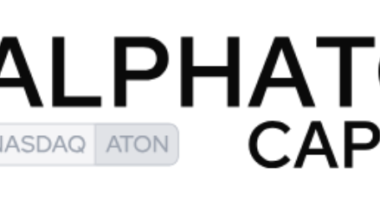For much of the past decade, Nvidia (NASDAQ: NVDA) has defined the frontier of artificial intelligence (AI) compute power. The company commands more than 94% of the discrete GPU market as of Q2 2025, a dominance built on its Blackwell architecture, the proprietary CUDA software ecosystem, and deep integration across AI-optimized networking solutions.
Nvidia’s annual innovation cadence, coupled with backward compatibility, has created one of the strongest moats in tech. Its GPUs drive everything from ChatGPT training clusters to autonomous vehicles, with hyperscalers like Amazon, Microsoft, and Google vying for allocation.
However, as Tarillium analysts note, the winds may be shifting. Heading into 2026, a convergence of competitive, economic, and geopolitical pressures could mark the beginning of a more challenging era for Nvidia, one where its long-standing dominance and premium valuation face their toughest tests yet.
AMD Is Mounting a Real Threat
Advanced Micro Devices (NASDAQ: AMD) is emerging as Nvidia’s first serious rival in years. Its upcoming Instinct MI450 GPUs, built on the CDNA 5 architecture and TSMC’s 2-nanometer process, are set to challenge Nvidia’s Hopper and Blackwell chips head-on in 2026.
A multi-year partnership with OpenAI, involving 6 gigawatts of GPU deployments, could generate tens of billions in annual revenue for AMD by 2027. With its chiplet-based design offering superior memory and bandwidth, AMD’s MI450 may become the low-cost, high-performance choice for hyperscalers, signaling a credible threat to Nvidia’s long-standing GPU dominance..
Hyperscalers Are Building Their Own Chips
Even more concerning for Nvidia, its biggest customers are becoming its competitors. Alphabet (Google) has its Tensor Processing Units (TPUs), Amazon has Inferentia and Trainium, Meta Platforms is scaling custom AI accelerators, and Microsoft is rumored to be doing the same.
These in-house AI chips are not just cost-saving tools; they are strategic assets designed to reduce dependence on Nvidia’s supply chain. When combined with Broadcom’s custom ASICs and emerging open hardware ecosystems, Nvidia’s once near-monopolistic position in AI compute could face fragmentation across multiple architectures.
For hyperscalers managing soaring capital expenditure budgets, switching to lower-cost or self-designed silicon is not just appealing, it’s inevitable.
Cost Pressures Could Erode Nvidia’s Pricing Power
AI infrastructure spending is ballooning. Global data center capex is projected by Dell’Oro Group to exceed $1.2 trillion by 2029, with hyperscalers accounting for nearly half that total. Rising energy and equipment costs mean that price-to-performance ratios will increasingly determine procurement decisions.
AMD’s MI355 accelerators (the precursor to MI450) reportedly match or exceed Nvidia’s GB200 Blackwell chips on specific workloads at lower cost and power draw. If those benchmarks hold true in real-world deployments, Nvidia could be forced into price competition, a scenario it has largely avoided thanks to its dominant market position.
For an organization accustomed to gross margins north of 70%, even modest pricing concessions could ripple through the company’s profitability profile.
Geopolitical and Supply Chain Headwinds
Nvidia’s manufacturing dependence on TSMC in Taiwan exposes it to acute geopolitical and logistical risks. With Taiwan just 100 miles from mainland China, any escalation of regional tensions could disrupt chip supply or logistics.
Moreover, U.S.-China trade restrictions continue to bite. In July 2025, China’s internet regulator summoned Nvidia to address alleged vulnerabilities in its H20 chips, followed by stricter customs inspections on AI hardware imports. The crackdown, initially targeting China-specific models, has since broadened to include most advanced semiconductor imports, effectively curbing Nvidia’s access to a major revenue stream.
While the U.S. CHIPS Act and equivalent initiatives in Europe and Japan are diversifying global semiconductor manufacturing, they may inadvertently level the playing field. New foundries from Intel, Samsung, and TSMC outside Taiwan will also benefit Nvidia’s rivals, reducing the company’s historical supply-chain edge.
Valuation: The Premium May Be Tested
Nvidia’s stock currently trades at 28.5× forward earnings, a valuation that reflects its unmatched growth trajectory but also leaves little margin for error. If competition intensifies, margins compress, or AI demand growth normalizes, multiple contractions could follow.
Investors love Nvidia for its innovation and profitability, but in 2026, those very metrics could face their toughest test yet. As AMD, Broadcom, and hyperscaler-designed chips gain traction, Nvidia’s once-insurmountable lead could finally narrow.
The Bottom Line
For the first time in a decade, Nvidia’s dominance has credible challengers on multiple fronts: technology, cost, and geopolitics. That doesn’t spell the end of Nvidia’s success story, but it does suggest that 2026 could mark the start of a new competitive era in AI hardware.
Investors may want to watch for signals of pricing flexibility, customer diversification, and software ecosystem expansion factors that will determine whether Nvidia’s moat remains intact or begins to erode.
As analysts put it: “Every dynasty looks invincible until the next revolution arrives.”






